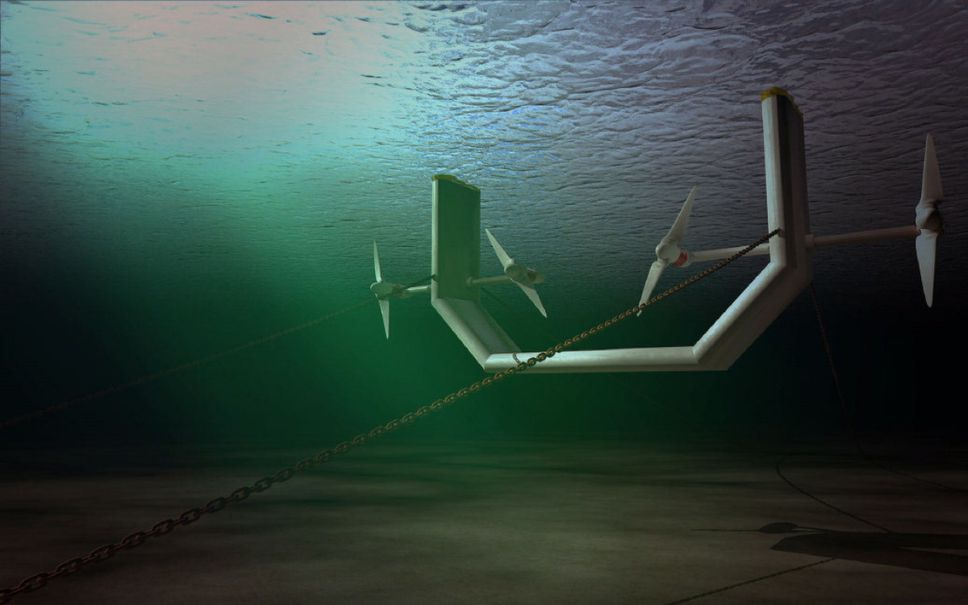Source: thestar.com
Published: July 12, 2016
By Keith Doucette
HALIFAX—By late 2017, the quest to generate commercial quantities of electricity from the powerful tidal currents in the Bay of Fundy could include testing of a Dutch-engineered floating turbine system that is based on wind power technology.
Halifax-based Minas Energy announced Tuesday it was partnering with Netherlands firm Tocardo International BV and Ontario-based International Marine Energy Inc. to form the Minas Tidal Limited Partnership.
The new partnership plans to test the Dutch company’s technology in the Minas Passage by late 2017, the third distinct approach announced recently to harnessing the bay’s powerful forces.
Tocardo president Hans Van Breugel said after testing in similar waters off Holland, his company finally feels its ready for the highest and strongest tides in the world.
“We feel brave enough to go to the Bay of Fundy,” said Van Breugel. “The Bay of Fundy is the holy grail.”
The Tocardo technology consists of four 250 kilowatt bi-directional open rotor turbine generators which are attached to a floating platform. The partially submerged platforms are held in place with a mooring system that will allow water to flow beneath the turbines.

The company says its in-stream device is designed to ensure the safety of human and marine life.
Van Breugel said he is well aware of objections by local environmentalists and fishermen who contend instream tidal turbines can’t be made safe for the ecosystem.
He said his company has conducted extensive environmental monitoring at its projects in Europe and has worked within one of the highest-ranked environmental protection zones off the Netherlands. Van Breugel believes a balance can be struck understanding the benefits and drawbacks of renewable energy technologies.
“I agree with the fishermen, we should understand it (environmental effects). On the other hand I would say to the fisherman that we are in a changing climate … and if we don’t change then nature will change.”
The partnership said it would hold consultations with First Nations, local communities and the fishing industry prior to testing.
John Woods, vice-president of energy development for Minas Energy, said his company realizes the importance of community outreach.
“We consider ourselves to be very good at that. We try to bring issues forward and try to get them resolved, so that’s Minas’s contribution to this (partnership).”
Once in the water the turbines will occupy less than 1/1000th of the cross sectional surface area of the Minas Basin — roughly equal to the size of two tennis balls on a tennis court, according to the Fundy Ocean Research Centre for Energy, which administers the test site.
It’s much smaller in scale than the project proposed by Cape Sharp Tidal, which plans to install two five-storey, two-megawatt turbines that are 16 metres in diameter and weigh 1,000 tonnes each.
The company, a partnership of OpenHydro and Emera, had planned to begin testing using one of its turbines in June but had to wait on final environmental approval from the province which came June 20.
Cape Sharp is now in a holding pattern as it conducts further consultations with local fishermen opposed to the project.
Black Rock Tidal Power Inc., is also preparing to install its TRITON S40, which uses 40 smaller turbines, each about four metres in diameter and designed specifically to survive the forces in the Bay of Fundy.
Energy Minister Michel Samson said he welcomes the Minas Partnership announcement and said he is interested to see how successful the different technological approaches will be.
“The whole concept here is to have different technologies being tried out to see what works best,” he said.
The challenges ahead are formidable as evidenced by a pilot project in 2009 which saw OpenHydro and Nova Scotia Power deploy a 400-tonne turbine that had two of its 12-metre blades snapped off in the powerful waters.
Van Breugel said his company plans a cautious approach to research and is looking at a long-term commitment.
“My experience is you have to work with the sea and not against the sea,” he said. “You can never beat the sea so you must find solutions where you can play with the sea and don’t try to harness it because that’s impossible.”
Read more about:
